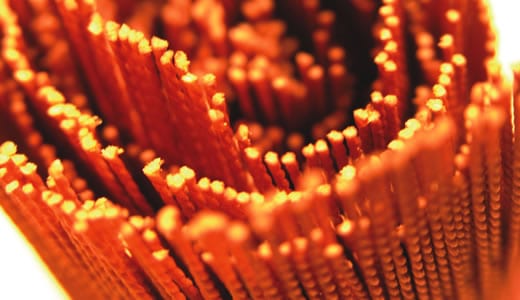Today starts a series explaining the fuzzy part of my business, fiber. Not all fibers are the same; even fibers with a shared chemical name may be different.
The starting point of carpet is the fiber, a fine thread-like unit that is converted into yarn then tufted or woven into carpet. There are only six primary fibers used in carpet today: Nylon, Polypropylene, Corterra® (same as DuPont’s Sorona, Polyester, Acrylic, and Wool. Also, very rarely, carpet may contain Cotton. (Yarn is a continuous strand of fibers.) The terms “carpet” and “rug” are sometimes used interchangeably. Rug generally means a textile floor covering that is not fastened down and that does not extend over the entire floor. Carpet usually refers to a floor covering that is installed and fastened down from wall to wall. In this section, we are primarily covering carpet fibers. Rug fibers would include these fibers and many others.
Most synthetic fibers are created by “extrusion” – melting the polymer chips and then forcing the thick, viscous liquid (about the consistency of cold honey) through the tiny holes of a device called a spinnerette (also spelled “spinneret”) to form continuous filaments of semi-solid polymer. The spinnerettes used in the production of most manufactured fibers look very much like a bathroom showerhead. A spinnerette may have from one to several hundred holes. As the filaments emerge from the holes in the spinnerette, the liquid polymer is converted first to a rubbery state and then solidified. This process of extrusion and solidification of endless filaments is called spinning, not to be confused with the textile operation of the same name, where short pieces of staple fiber are twisted into yarn. The fibers in conventionally spun staple yarns must be held together by twisting them together into an endless yarn bundle.
Once exposed to air-cooling, the fiber strands harden to a single filament (much like fishing line). The fibers can be extruded in different cross-sectional shapes (round, trilobal, pentagonal, octagonal, and others). The original nylon carpet fibers were round, which creates a lens effect, magnifying soil. By adding chalk to the fiber (called delustering), the magnification of soil is somewhat lessened, but the colors are now dull. The irregular shape of trilobal-shaped fibers reduces the magnification effect and scatters more light to make soil less visible and give an attractive sparkle to textiles. Pentagonal-shaped and hollow fibers, when used in carpet, show less soil and dirt. Octagonal-shaped fibers offer glitter-free effects. Hollow fibers, such as DuPont’s Antron®, provide better soil hiding and thermal insulation qualities.
The hardened fiber strands are then wound around a bobbin, stretched to a smaller diameter, twisted, and wound. While extruded fibers are solidifying, or in some cases even after they have hardened, the filaments may be drawn to impart strength. Drawing pulls the molecular chains together and orients them along the fiber axis, creating a considerably stronger yarn.
Source: http://www.baneclene.com/articles/fiber-chemistry.html
Next post: The Fuzzy Details.



